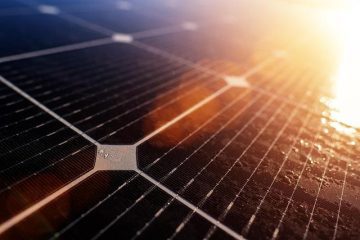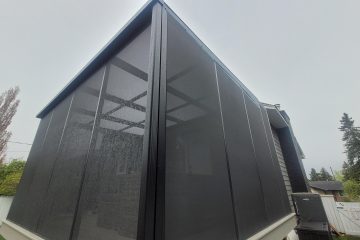Table of Contents
- The Benefits of Solar Panels for Homeowners
- Understanding the Different Types of Solar Panels Available
- How to Choose the Right Solar Panel System for Your Needs
- The Financial Impact of Installing Solar Panels
- Maintenance Tips to Keep Your Solar Panels Efficient
- Q&A
- In Retrospect


The Benefits of Solar Panels for Homeowners
For homeowners looking to reduce their energy bills and enhance their property value, solar panels offer an array of noteworthy advantages. By harnessing the power of the sun, these systems can significantly decrease your reliance on traditional energy sources. As energy prices rise, the savings from producing your own electricity can be substantial over time. Homeowners not only enjoy lower monthly utility costs but can also see a considerable return on their investment when it comes to property resale value, making solar panels a smart financial choice.
In addition to the economic benefits, solar energy contributes to a more sustainable and eco-friendly environment. Switching to solar panels reduces your carbon footprint by lowering greenhouse gas emissions, which is vital in the fight against climate change. Many homeowners feel a sense of pride knowing they are part of a broader movement toward renewable energy. Moreover, many local and federal governments provide incentives for solar installations, such as tax credits or rebates, making the transition to solar energy even more appealing and financially viable.
Furthermore, solar panels can enhance energy independence for homeowners. With a solar power system in place, you are less vulnerable to fluctuating energy prices and outages caused by grid failures. Battery storage options can take this independence a step further, allowing homeowners to store excess energy generated during sunny days for use during nighttime or cloudy weather. This combination of direct solar use and energy storage makes it possible to maintain control over your own energy production and consumption.


Understanding the Different Types of Solar Panels Available
When choosing solar panels for your home, it’s essential to understand the various types available on the market. Each type has its unique characteristics, advantages, and complexities. The two most prevalent options are monocrystalline and polycrystalline panels. Monocrystalline panels are made from a single crystal structure, allowing them to be more efficient and take up less space. Conversely, polycrystalline panels consist of multiple crystal structures, making them slightly less efficient but often more budget-friendly. This efficiency is a crucial factor to consider, especially if you have limited roof space for installation.
Another option worth exploring is thin-film solar panels. These panels are crafted from layers of photovoltaic material and are typically lightweight and flexible, allowing for unique installation applications. Thin-film panels may require more space due to their lower efficiency compared to crystalline counterparts, but their versatility and reduced manufacturing costs can make them an appealing choice for certain homeowners. Additionally, some products, like building-integrated photovoltaics (BIPV), blend seamlessly into building materials, providing aesthetic benefits while still generating energy.
To help you compare these types of solar panels, consider the following table outlining their key differences:
| Type | Efficiency | Cost | Space Requirements | Ideal Use |
|---|---|---|---|---|
| Monocrystalline | 20-25% | Higher | Less space | Limited roof area |
| Polycrystalline | 15-20% | Less expensive | Moderate space | Budget-friendly projects |
| Thin-Film | 11-13% | Generally lower | More space | Large installations |
Understanding the nuances of each type will better equip you to make an informed decision tailored to your home’s energy needs and budget. As you investigate your options, consider not only the upfront costs but also the long-term energy savings and the environmental impact of your choice.
How to Choose the Right Solar Panel System for Your Needs
When it comes to selecting a solar panel system for your home, the first step is to assess your energy needs. Understanding how much energy you consume each month will allow you to determine the size and capacity of the solar system that will effectively meet your requirements. Start by looking at your electricity bills over the past year to identify your average monthly consumption. You can then use this information to estimate how many solar panels you’ll need to generate sufficient energy.The configuration of your roof also plays a crucial role in your decision-making process. Ensuring that your roof space can accommodate the solar panel installation is essential. Factors to consider include:- Orientation: South-facing roofs typically receive more sunlight.
- Shade: Trees, buildings, or other obstructions can limit solar exposure.
- Space: Consider if your roof has enough area to host the necessary panels.
| Type of Solar Panel | Efficiency | Cost | Best For |
|---|---|---|---|
| Monocrystalline | 15-22% | High | Limited space and high budgets |
| Polycrystalline | 13-16% | Moderate | Budget-conscious installations |
| Thin-Film | 10-12% | Low | Large, unshaded areas |


The Financial Impact of Installing Solar Panels
Installing solar panels can significantly reduce your utility bills and lead to long-term savings for homeowners. On average, solar panels can lower electricity bills by up to 70%, depending on your energy consumption and local regulations. This reduction means more disposable income for other investments, which can eventually outweigh the initial installation costs. Additionally, with the rising prices of traditional electricity sources, locking in lower energy costs through solar technology becomes increasingly advantageous.
Moreover, many governments offer tax incentives and rebates for homeowners who install solar panels, enhancing the financial benefits. Some notable incentives include:
- Federal Investment Tax Credit (ITC): A tax credit of 26% of the installation costs, which can exponentially increase your returns.
- State Rebates: Various states have their own rebate systems, which can further reduce the solar investment.
- Net Metering: Homeowners may receive credits for excess electricity generated, offsetting future utility bills.
An essential aspect to consider is the increase in home value resulting from solar panel installation. Studies show that homes equipped with solar energy systems can sell for up to 4% more than comparable homes without them. Here’s a simplified breakdown of how solar panels affect home value:
| Home Value Increase (%) | Estimated Average Increase ($) |
|---|---|
| Up to 4% | $15,000 on a $375,000 home |
This combination of savings on energy bills, available incentives, and potential home value increase makes installing solar panels a financially sound decision for many homeowners.


Maintenance Tips to Keep Your Solar Panels Efficient
To ensure that your solar panels operate at peak efficiency, regular maintenance is essential. One of the simplest yet most effective ways to maintain your panels is by keeping them clean. Dust, dirt, and debris can significantly reduce their ability to absorb sunlight. Consider scheduling a biannual cleaning to remove any build-up. You can do this yourself using a soft sponge and mild detergent or hire a professional for a more thorough job.
In addition to cleanliness, it’s crucial to monitor the performance of your solar energy system continuously. Most modern systems come with monitoring software that tracks energy production. Keep an eye on any sudden drops in output, which might indicate a problem. If you notice a significant decrease in energy generation, it might be time to perform a detailed inspection. The key components to check regularly include the inverter, wiring, and mounting hardware to ensure everything is in good working order.
Lastly, ensure that the surrounding environment remains conducive for optimal solar performance. Trim any overhanging branches or foliage that might cast shadows on your panels, particularly during peak sun hours. Additionally, it’s beneficial to conduct a yearly inspection of the roof and mounting system to check for any potential structural issues. By maintaining both the cleanliness and structural integrity of your solar panels, you’ll maximize your investment and enjoy consistent energy savings.




0 Comments